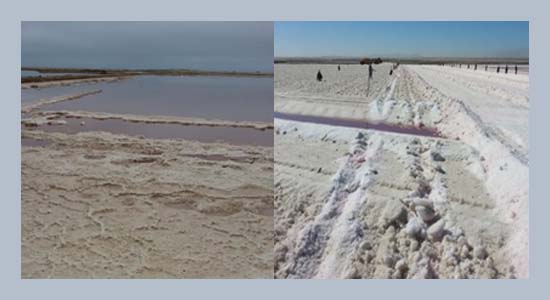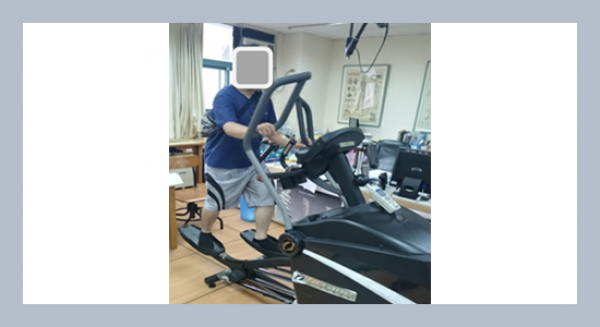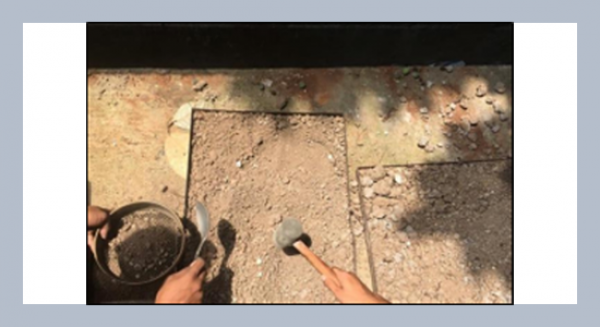REFERENCES
- Busby, C. 2010. ECRR Uranium and health: The health effects of exposure to uranium and uranium weapons fallout. Documents of the ECRR 2010 No 2, European Committee on Radiation Risk (ECRR), Brussels.
- Calin. M.R., Radulescu, I., Ion, A.C., Capra, L., Almasan, E.R. 2020. Investigations on chemical composition and natural radioactivity levels from salt water and peloid used in pelotherapy from the Techirghiol Lake, Romania. Environmental Geochemistry and Health, 42, 513–529. https://doi.org/10.1007/s10653-019-00382-8
- Caridi, F., Marguccio, S., D’Agostino, M., Belvedere, A., Belmusto, G. 2016. Natural radioactivity and metal contamination of river sediments in the Calabria region, south of Italy. European Physical Journal Plus, 131, 155. https://doi.org/10.1140/epjp/i2016-16155-x
- El-Bahi, S.M. 2003. Radioactivity levels of salt for natural sediments in the northwestern desert and local markets in Egypt. Applied Radiation and Isotope, 58 (1), 143-148.
- El-Taher, A. 2010. INAA and DNAA for uranium determination in geological sample from Egypt, Applied Radiation and Isotopes, 68, 1189–1192.
- Faisal, B.M.R., Majumder, R.K., Uddin, M.J., Deeba, F., Paul, D., Haydar, M.A., Ali, M.I. 2015. Assessment of heavy metals pollution and natural radioactivity in topsoil of Savar industrial area, Bangladesh. International Journal of Environmental Science, 5, 964-979.
- Folkner, W.M., William, J.G. 2008. Mass parameters and uncertainties in planetary ephemeris DE421.” interoffice memo. 343R-08-004 (internal document), Jet Propulsion Laboratory, Pasadena, CA.
- Harikrishnan, N., Ravisankar, R., Chandrasekaran, A., Gandhi, M.S., Vijayagopal, R.M. 2018. Assessment of gamma radiation and associated radiation hazards in coastal sediments of south east coast of Tamilnadu, India with statistical approach. Ecotoxicology and Environmental safety 162, 521-528.
- ICRP, 2012. Compendium of dose coefficients based on ICRP Publication 60. ICRP Publication 119. Ann. ICRP 41(Suppl.).
- Innocent, A. J., Onimisi, M. Y., Jonah, S. A. 2013. Evaluation of naturally occurring radionuclide materials in soil samples collected from some mining sites in Zamfara State, Nigeria. British Journal of Applied Science and Technology, 3, 684–692.
- Kansaana, C., Darko, E.O., Schandorf, C., Adukpo, O.K., Faanu, A., Lawluvi, H., Kpeglo, D.O. 2012. Determination of Natural Radioactivity in Saline Water and Salt from Panbros Salt Industry Limited in the Accra Metropolis, Ghana. International Journal of Science and Technology, 2, 107–111.
- Lin, W., Chen, L., Yu, W., Ma, H., Zeng, Z., Lin, J., Zeng, S. 2015. Radioactivity impacts of the Fukushima Nuclear Accident on the atmosphere. Atmospheric Environment, 102, 311-322.
- NCRP. 1987. Ionizing radiation exposure of the population of the United States, NCRP Report No. 93 (National Council on Radiation Protection and Measurement, Washington DC.)
- NCRP. 1975. National Background Radiation in the United States, NCRP Report No. 45, National Council on Radiation Protection and Measurement, Bethesda, Md, USA.
- Onjefu, S.A, Kgabi, N.A., Taole, S.H, Grant, C., Antoine, J. 2017. Assessment of natural radionuclide distribution in shore sediment samples collected from the north dune beach, Henties Bay, Namibia. Journal of Radiation Research and Applied Sciences, 10, 301-306.
- Onjefu, S.A., Hitila, M., Katangolo, H., Zivuku, M., Abah, J., Mutorwa, M.K. 2020. Measurement of natural radioactivity concentration in various types of rice consumed in Windhoek, Namibia. Nigerian Journal of Physics, 28(2), 124-128.
- Oyedele, J. A., Shimboyo, S., Sitoka, S., & Gaoseb, F. 2010. Assessment of natural radioactivity in the soils of Rössing Uranium Mine and its satellite town in western Namibia, southern Africa. Nuclear Instruments and Methods in Physics Research Section A: Accelerators, Spectrometers, Detectors and Associated Equipment, 619, 467–469. http://dx.doi.org/10.1016/j.nima.2010.01.068
- Paschoa, A.S. and Steinhausler, F. 2010. Terrestrial, atmospheric and aquatic natural radioactivity. Radioactivity in the Environment, 17, 29–85.
- Poltabtim, W., Saenboonruang, K. 2019. Assessment of activity concentrations and their associated radiological health risks in commercial infant formulas in Thailand. Chiang Mai Journal of Science, 46(4), 778-786.
- Ravisankar, R., Rajalakshmi1, A., Eswaran, P., Gajendiran, V., Meenakshisundram, V. 2007. Radioactivity levels in soil of salt field area, Kelambakkam, Tamilnadu, India. Nuclear Science and Techniques, 18(6), 372-375.
- Reda, E., Mohammed, A.A.O., El-Montaser, M.S., Atef, E. 2018. Natural radioactivity levels and radiological hazards in soil samples around Abu Kargas sugar factory. Journal of Environmental Science and Technology, 11, 28-38.
- Sahin Bal, S. 2018. The determination of concentrations of radioisotopes in some granite samples in turkey and their radiation hazards. Radiation Effects and Defects in Solids, 173(5-6), 353-366. https://doi.org/10.1080/10420150.2018.1462358
- Shabaan, D.H. 2018. Radioactivity measurements of different types of salt using SSNTD. AIP Conference Proceedings 1976, 020023 (2018); https://doi.org/10.1063/1.5042390
- Tahir, S.N.A, Alaamer, A.S. 2008. Determination of natural radioactivity in rock salt and radiation doses due to its ingestion. Journal of Radiological Protection, 28(2), 233-236.
- Turekian, K.K. 1970. Abundance of Th and U in earth crust in McGraw-Hill Encyclopeia of Science and Technology, 4, 627.
- UNSCEAR. 2000. Sources and effects of ionizing radiation. Report to the General Assembly with Scientific Annexes. New York: United Nations.
- UNSCEAR. 2008. Sources and effects of ionizing radiation. Report to the General Assembly with Scientific Annexes C, D and E-Effects. New York: United Nations.
- USEPA. 1991. Role of the Baseline Risk Assessment in Superfund Remedy Selection Decisions (Memorandum from D. R. Clay, OSWER 9355.0–30, April 1991). Washington DC: US Environmental Protection Agency.
- Uwatse, O.B., Olatunji, M.A., Khandaker, M.U., Amin, Y.M., Bradley, D.A., Alkhorayef, M., K. Alzimami, K., 2015. Measurement of natural and artificial radioactivity in infant powdered milk and estimation of the corresponding annual effective dose. Environmental Engineering Science 32. 838-846. https://doi.org/10.1089/ees.2015.0114
- Vive I Batlle, J., Aoyama, M., Bradshaw, C., Brown, J., Buesseler, K.O., Casacuberta, N., Christl, M., Duffa, C., Impens, N.R.E.N., Iosjpe, M., Masque, P., Nishikawa, J., 2018. Marine radioecology after the Fukushima Dai-ichi nuclear accident: are we better positioned to understand the impact of radionuclides in marine ecosystems? Science Total Environment, 618, 80-92.
- WHO. 2012. Guideline: Sodium intake for adults and children. Geneva, World Health Organization.
- William, F.R., Steck, D.J., Smith, J., Brus, C.P., Fisher, L., Neuberser, J.S., Platz, C.P., Robinson, R.A., Woolson, R.F., and Lynch, C.F., 2000. Residential radon gas exposure and lung cancer. American Journal of Epidemiology, 151(11), 1091-102. https://doi.org/10.1093/oxfordjournals.aje.a010153
- Xinming L., Wuhui L., 2018. Natural radioactivity in the beach sand and soil along the coastline of Guangxi Province, China. Marine Pollution Bulletin, 135, 446-450.
- Zivuku M., Kgabi N.N., Tshivhase V.M. 2018. Excess lifetime cancer risk due to natural radioactivity in soils: case study of Karibib Town in Namibia. African Review of Physics 13: 0012, 71.















